

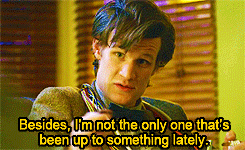
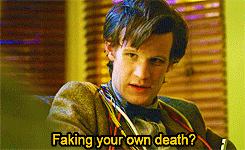

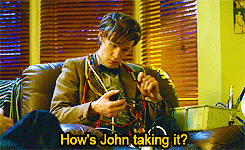


Wholock AU The Doctor seeks an old friend’s help to find his new companion.
“What’s her name?”
“Clara.”
sobbing








Wholock AU The Doctor seeks an old friend’s help to find his new companion.
“What’s her name?”
“Clara.”
sobbing
If Darren J. Gendron was dead right now, he would be rolling over in his grave.
There is definitely a plethora of kill puns present in this video. And make sure to stick around for the kill screen. You see what I did there?
…Kill.i.am!
source: YouTubeAlvaro Freitas"Janet Stephens, a hairdresser and amateur archaeologist"
Velho, eu queria uns títulos loucos desse tipo.
 SEATTLE—The hairstyle worn by Rome’s Vestal Virgins has been recreated by Janet Stephens, a hairdresser and amateur archaeologist who has recreated other ancient hairdos. “These were the six most important women in Rome with possible exception of the emperor’s wife,” she explained at the annual meeting of the Archaeological Institute of America. She figured out the complicated pattern of braids by studying two busts of vestal virgins.
SEATTLE—The hairstyle worn by Rome’s Vestal Virgins has been recreated by Janet Stephens, a hairdresser and amateur archaeologist who has recreated other ancient hairdos. “These were the six most important women in Rome with possible exception of the emperor’s wife,” she explained at the annual meeting of the Archaeological Institute of America. She figured out the complicated pattern of braids by studying two busts of vestal virgins.
 Fonte de raios X sem elementos radioativos abre caminho para tricorder da vida real.
Fonte de raios X sem elementos radioativos abre caminho para tricorder da vida real.
José Serra vaga maltrapilho pelas ruas de São Paulo. Pouco cabelo, dentes podres porém afiados, vive a gritar com tudo e todos na região da Praça da Luz. Poucos lembram do dia da posse quando José Serra subiu a rampa do Planalto aos gritos e, para surpresa da multidão, agarrou a faixa presidencial e ficou a chamá-la de sua. Retirado pela segurança, foi diagnosticado com uma doença completamente nova na medicina, uma espécie de cleptomania política, e aos poucos acabou esquecido pelo país, pela cidade e pelo bairro.
Se engana quem pensa que o ex-candidato é um pobre coitado. Serra finalmente conseguiu um governo para chamar de seu. Com as caixas de papelão que recolhe nas ruas, constrói creches, escolas, instituições financeiras. A pouca comida que recebe distribui para as pombas da região. Perguntado se não é assistencialismo, Serra ressalta que hoje a ideia do Estado Mínimo se perdeu em uma cornucópia de grandes corporações e presidentes que posam para fotos em revistas semanais.
Quando um grupo de ratos novatos chegam ao feudo serrista, são saudados com festa pelo político. “Vejam, que belos novos cidadãos temos aqui”, diz. Apesar disso, o ex-governador entrevista a todos, como forma de saber se são bem vindos ao seu pequeno país. “Tenho que agir em reciprocidade a lei brasileira”, relata. Após uma rápida conversa, os ratos são aceitos pela imigração.
Uma característica dos tempos de governador permanece em José Serra: o cachorro Fleury está sempre a postos para manter a lei e a ordem nos cerca de cinco metros quadrados que o governo serrista ocupa. Vira lata com anos de experiência, Fleury costuma rosnar para todos que se aproximam do país. Segundo Serra, “o Fleury é uma figura enérgica, como todo Estado deve ser para manter sua soberania”. Questionado pela reportagem sobre possíveis crimes cometidos antes do cargo, Fleury abanou o rabo e saiu para ver frangos na padaria.
Os populares que passam pela rua têm sentimentos ambíguos sobre o ex-candidato. “Sempre foi um coitado”, diz Maria Almeida, 27 anos. Já para Jose Carlos, 30, Serra é “uma vítima do sistema cruel que é a política”. Opiniões a parte, Serra acredita que está fazendo uma ótima gestão em seu pequeno país de cinco metros. “Pode ver em qualquer pesquisa que meu índice de satisfação é maior que do presidente atual”, diz. Antes de sairmos, o ex-prefeito nos chama para mostrar sua joia da coroa: a faixa de presidente roubada anos antes. “Não é linda? E é minha. Só minha. MINHA PRECIOSA”.
A Sony resolveu não mais fabricar o Playstation 2. Só vai vender o que está nas fábricas e depois disso ele será uma daquelas peças de museu, como a máquina de escrever, o mimeógrafo, o Super Nintendo e tantos outros heróis de outras épocas.
Vá lá você dizer que sou saudosista e com razão. Meia hora de Santa Efigênia já me dá ideias como comprar um Mega Drive, pensamentos esses que somem quando penso onde vou ligar esse cara. Nas TVs de hoje, superledamoledducaled? Preciso comprar também a Sharp tubão, para voltar a 1992, quando o grunge dominava o mundo e Sonic, Toki e Kid Chameleon eram muito melhores que o Screaming Threes. É um gasto de grana e, principalmente, de espaço, que não rola nos dias de hoje. Preciso criar o Recanto do Guerreiro aqui em casa.
Voltando ao PS2, que ideia brilhante. Lembro que quando vi o Playstation 1, babei até molhar o Saara. Era incrivel, era mágico, era poligonal. Vivi grandes histórias com Metal Gear Solid, Final Fantasy VII, Simphony of the dark e Winning Eleven até ver aquela caixa preta na casa de um amigo. Quando ele ligou a Caaba dos videogames, puta merda. Avancei sei lá, 218 anos em tecnologia. Aquilo era incrível. O Winning Eleven era como um jogo de futebol verdade. O Metal Gear Solid 2 era como a espionagem de verdade. E surgiu sorrateiro God of War, sem dúvida meu top três da vida. Foram diversos CDs, alguns memory cards e outros tantos controles de vitórias incríveis, derrotas injustas e filhos da puta a esmo em frente a TV. O mundo avança, a Microsoft melhora as coisas e a Sony bate de frente com o PS3, o videogame que tenho hoje e o qual venero como se fizesse chover maná dos céus. Mas sempre que remasterizam um jogo incrível da caixa preta eu estou lá, recordando do console mais vendido que esse mundo verá. Vaticino sem dó pois os videogames serão cada vez mais incríveis. Mas o Playstation 2 é Bastilha, é Fórum Romano, é Kratos rasgando as entranhas dos deuses.
Te vejo na Santa Efigênia, caixa preta.
There’s been a lot of yammering about Community lately, which by itself is nothing new. This is the Internet, there’s always a lot of yammering about Community. What makes this latest round different is that it’s coming from big, fancypants NBC executives instead of the hoards of blog- and Twitter-types that usual rouse this particular brand of rabble. (Related: Hi!) Due to a combination of new management, the build-up for the spring schedule, and the TCAs, NBC bigwigs have been making themselves available to answer questions, and — SURPRISE SURPRISE — many critics and television insiders have had questions about the show that’s widely adored among critics and television insiders, if few others.
Josh touched on some of this earlier today in his TCA Roundup, where he mentioned NBC President Bob Greenblatt saying generally that Community could “absolutely get a fifth season,” and specifically “You’re going to see relatively the same show you’ve seen before and I hope that’s a good thing. Maybe there’s a little more heart built into it, but we didn’t fundamentally change it.”
And in an interview with The Hollywood Reporter, new-ish President of Entertainment Jennifer Saltz had this to say about the show, and the state of the network as a whole:
THR: You’ve said you want to change NBC’s brand of comedy. How?
Salke: We’ve talked about the idea of going broader. It doesn’t mean going broad. We’re trying to increase the ratings. That’s our job. We have these shows in 30 Rock, Parks and Recreation and Community that we love. They’re super sophisticated, and they attract a very upscale audience, but we need to expand beyond that. [...]
THR: How long do you intend to stick with Community, which is both narrow and adored?
Salke: There’s no way to deny that the show is loved by many, many people who aren’t measured by Nielsen. So the giant question on everybody’s mind is how do we go about getting an accurate representation of who’s actually watching all of these shows when you have entire generations of people who do not watch any live television.
THR: Does it live beyond this season with those ratings?
Salke: Well, first of all, any show that’s doing okay that we love we will try to support as much as we can. But there are more things that go into that decision. For instance, it depends on what’s happening financially with the show. We have shows that we love that lose tons of money. So those factors obviously come into the equation
There’s a healthy, robust amount of PR spin to dig through in both of their answers, but the gist of it is this: NBC has pretty much decided that a schedule full of “sophisticated” comedies like Community, Parks & Recreation, and 30 Rock is an unsustainable business model, and something needs to give in order for the network to remain competitive. This is fine. They are, after all, a business. I wish them nothing but the best in all their future monkey-wearing-a-labcoat-style endeavors.
But I would like to make one small point, if I may. A request, really: Please don’t screw around too much with my shows in the process. I know this may go slightly against the #SixSeasonsAndAMovie mantra, but I swear to God it is okay with me if you cancel Community after this season. Please don’t mistake me here, I would prefer that you don’t. But if my only options are that, and, like, a reworked, post-Michael-Scott-The Office-ed version of the show — with more “heart,” whatever that means exactly — I’ll take the former 100 times out of 100. (Same thing goes for Parks & Rec, which, for the record, has so much heart that it’s oozing out its various orifices and dripping all over Pawnee.) This is the same argument I made last season when people were clamoring for more “accessible” episodes of Community, ones that could draw in a larger subset of viewers, preferably with Nielsen boxes. I don’t want an accessible version of my favorite shows. I want the same laser-focused, from-concentrate stuff that made me like them in the first place.
No, I’d rather you give the show a firm end date so it can finish telling its desired story, then let it die a noble death by firing squad instead of allowing it to wither away in a dungeon somewhere, rambling about Halloween and Christmas sometime after February like a lunatic. I may not be as frequent a viewer as I once was after this happens — I’ll still buy all the seasons on iTunes or Netflix, I promise — but, to be honest, you and I were growing apart anyway. I’m more of a cable guy at this point. You know: FX, AMC, HBO, and heck, even USA and TNT, sometimes. You don’t really want my business, because I am a snob and the snob market can’t keep you afloat. We’ve seen that. It’s fine.
And after you let Community go out the way it deserves, the way 30 Rock will later this year, you can fill your schedule with whatever you like: a multi-camera show starring Paul Reiser as a grumpy grandfather forced to run his daughter’s daycare after her untimely death (HEART! PRECOCIOUS KIDS!), a laugh track-filled goof-fest about four 30-somethings — two of whom could be gay, if you like — trying to open a hip Brooklyn-style brunch spot in rural Texas (CULTURE CLASH!), whatever you want. Those are freebies, gifts from me to you. And you can have either or both of them if you agree to one simple condition: Leave my shows alone.
Thank you for your time. I’ll be watching Archer if you need me.
The post Dear NBC: It Is Okay If You Cancel ‘Community’ appeared first on UPROXX.
Chris Hadfield’s response to William Shatner got quite a bit of attention on Twitter
You know that you’re living in a very special point in time when you can watch a man who became famous playing a starship captain on television send a tweet to a man who’s actually working in a spaceship orbiting the Earth — and get an amusing response back.
Which is exactly what happened earlier today when William Shatner got a reply from Chris Hadfield, currently part of the Expedition 34 crew aboard the ISS. For many people Shatner was the first starship captain remembered from TV in the late ’60s, and in a couple of months Chris Hadfield will become the first Canadian astronaut to assume command of the International Space Station.
(Shatner, by the way, is also from Canada. Hmm…maybe there’s something more going on here…)
© Jason Major for Universe Today, 2013. | Permalink | 3 comments |
Post tags: Canada, Chris Hadfield, ISS, Kirk, Star Trek, tweet, Twitter, william shatner
Feed enhanced by Better Feed from Ozh
| Ads by Project Wonderful! Your ad could be here, right now. |
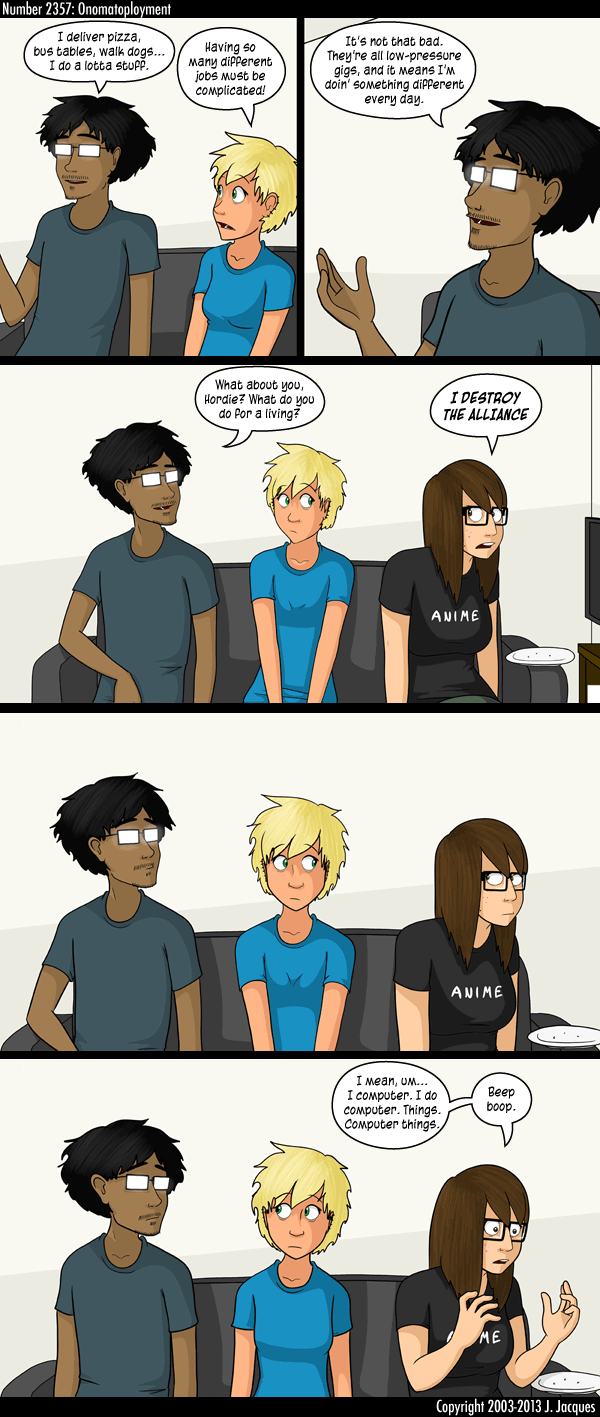
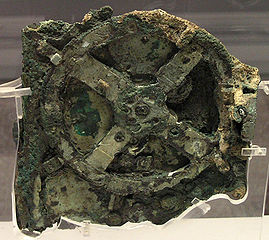 ANTIKYTHERA, GREECE—Archaeologists have returned to the Roman shipwreck off the coast of Greece where the Antikythera Mechanism was discovered in 1901. The new survey has shown that the ship is twice as long as had been thought, and it contains additional calcified objects. “The (objects) may just be collections of bronze nails, but we won’t know until someone takes a look at them,” said Brendan Foley of the Woods Hole Oceanographic Institute. The huge ship had also been transporting pottery vessels and roof tiles when it sank. This cargo may have been intended for Romans living in Greece, or Greek plunder being shipped back to Rome.
ANTIKYTHERA, GREECE—Archaeologists have returned to the Roman shipwreck off the coast of Greece where the Antikythera Mechanism was discovered in 1901. The new survey has shown that the ship is twice as long as had been thought, and it contains additional calcified objects. “The (objects) may just be collections of bronze nails, but we won’t know until someone takes a look at them,” said Brendan Foley of the Woods Hole Oceanographic Institute. The huge ship had also been transporting pottery vessels and roof tiles when it sank. This cargo may have been intended for Romans living in Greece, or Greek plunder being shipped back to Rome.
Era uma vez o menino offline.
O menino offline era um menino como outro qualquer, mas era offline.
O menino offline era offline porque não gostava de ser online.
Os meninos online debochavam do menino offline por ele passar tempo demais brincando na rua.
O menino offline não ligava para os deboches dos meninos online.
O menino offline exibia com orgulho as mãos calejadas de tanto subir em árvore.
Os calos nas mãos dos meninos online eram de tanto apertarem os botões dos jogos.
Os pais começaram a ficar preocupados com o menino offline.
Um dia, ao chegar do pique, o menino offline encontrou um smartphone em seu quarto.
O menino offline ficou feliz com o smartphone.
No dia seguinte, o menino offline usou o smartphone como goleiro em seu futebol de botão.
Os vizinhos passaram a comentar sobre o menino offline.
Incomodados, os pais do menino offline criaram um perfil em uma rede social para ele em seu aniversário.
“É feio não responder as pessoas no dia de seu aniversário”, disseram os pais do menino offline.
O menino offline, pela primeira vez, passou a utilizar uma rede social.
“Você pode acompanhar o seu perfil também pelo smartphone” disseram os pais do menino offline.
O menino offline não conseguia mais deixar de acompanhar as mensagens, notícias e postagens das pessoas.
O menino offline acabou passando a fazer parte ativa da rede social.
O menino offline se tornou um menino online.
Os pais do ex-menino offline ficaram satisfeitos.
“Agora o nosso menino offline achou a normalidade”, pensaram os pais.
O ex-menino offline realmente achou a normalidade e a compartilhou, mas sem curtir.

A corgi leading a conga line of pugs on an adventure.
He’s taking the corgis to Isengard.

When I wasn’t watching college football yesterday, I spent some time reading the new issue of the New Yorker on my iPad. Two pieces stood out to me as excellent: this Adam Green profile of master pickpocket Apollo Robbins (seriously, read the whole thing when you have an hour to spare), and Lauren Collins’ deep dive into Danish television, specifically why and how shows like The Killing — the original version, BTW, not the sh*t-sandwich AMC served us — have become so good and popular worldwide.
Sadly, Collins’ massive piece is hidden behind the New Yorker paywall, but here’s what it essentially boils down to: a) Danish television is dominated by a single public television network (DR) that is well-funded by citizens who happily cough up a good bit of money each year to support it, and b) the aforementioned publicly funded network treats its writers like kings, just as they should be.
Here are two excerpts from the piece that I think get right to the heart of this. The first…
“The Killing,” “Borgen,” and “The Bridge” are all made by Denmark’s public-service broadcaster, DR. Established in 1926, by an act of parliament, DR remained a monopoly of nation-wide television until 1988. It dominates Danish cultural life to the extent that, each week, ninety-seven per cent of the population listens to or watches something from its Web site or one of its ten radio stations and six television channels, including DR1 (the flagship chan- nel), DR2 (its artsier offshoot), DRK (for kultur and history), and DR Ramasjang, which — as Lauren Kirchner, of the Web site the Awl, recently pointed out — is producing some of the world’s most “terrific, bizarre” children’s programming, complete with a singing pizza and cross-dressing puppets. DR is required by law to work “in the interest of the people,” providing “a wide range of programs and services comprising news coverage, information, education, art, and entertainment.” Nadia Kløvedal Reich, DR’s head of fiction, told me recently, “We have a huge influence in society. Our main goal is to tell stories about Danish people, in Denmark.”
Danes with televisions pay an annual licensing fee of about four hundred dollars, giving DR a yearly budget of six hundred and sixty million dollars. Because Denmark is small, and relatively heterogeneous, DR can attempt to appeal to almost everyone. It is both mass-oriented and high-minded — CBS and NPR, with a touch of HBO. Like the BBC, it is considered a tent pole of the nation’s identity, and even though it is by definition apolitical, it is suspected in certain quarters of harboring a left-wing agenda.
…
One of DR’s competitive advantages is its centralization, which allows its employees to exploit decades’ worth of accumulated institutional knowledge. A showrunner can float a plot point by a specialist on the news desk. A producer can get a backdrop made in minutes in the downstairs workshop, where, amid clouds of sawdust, I noticed a large wooden letter. “Oh, that’s the ‘X’ from ‘The X Factor,’ ” someone said.
At one point, as I sat in the lobby, two youngsters walked by carrying paper plates heaped with salad. I had the feeling that I knew them, even though I knew no one in Copenhagen. It turned out that they were the actors who play Birgitte Nyborg’s children. Later, I walked past Studio 8, a hangar-like space that houses a replica of the Danish Prime Minister’s suite of offices at Christians- borg Palace. The costume department was in the basement. There were moose heads, dozens of rocking chairs, a room entirely filled with stools. Umbrellas were arranged by category: Old, New, Plastic, Children’s, Chinese, Bag. This was the hit factory — European television’s Motown Records, 1966.
The second…
DR now produces only original material, but until twenty-five years ago half of its repertoire consisted of filmed plays. In the nineteen-nineties, “two game-chang- ers,” as Gjervig Gram called them, overturned the status quo. First, the Danish film scene flourished, spawning the Dogme 95 movement, in which directors such as Lars von Trier and Thomas Vinterberg filmed pure, realistic stories in an austere style. “Danish television producers were inspired—not necessarily by Dogme’s specific values, but by the way Dogme had made it on the world stage,” the Guardian writer Patrick Kingsley explains in his new book, “How to Be Danish.” There is an unusual amount of crossover in Denmark between the worlds of film and television. Nearly all the country’s leading directors, cinematographers, and script-writers are graduates of the state-funded National Film School of Denmark. Eva Novrup Redvall, an assistant professor in the Department of Media, Cognition, and Communication at the University of Copenhagen, has written that the school’s screenwriting department fosters a “shared language between professions.” In 1994, von Trier made “The Kingdom,” a melancholy DR miniseries about life in the neurosurgery ward of Copenhagen’s largest hospital. DR uses the school as a farm system, hiring talented young alumni and pairing them with trusted veterans.
The second thing that revolutionized Danish television was a trip to America. In the mid-nineties, DR sent several of its top executives and producers to Los Angeles, where they visited the sets of “N.Y.P.D. Blue,” “L.A. Law,” and “24.” They returned to Denmark with new concepts: writers’ rooms, showrunners, multi-episode series. “From then on, we were consciously trying to professionalize,” Piv Bernth, of “The Killing,” said. Gjervig Gram explained, “We said, ‘We’re going to do it the American way,’ but it took some years to find the Danish way to do it the American way.”
The first hallmark of the Danish way is a principle that DR calls “one vision.” This means, essentially, that the writer is king. A ten-episode season of a show like “Borgen” is made on a relatively small budget of about eight million dollars, but DR lavishes its writers with time and indulgence. An incubation period of several years is customary. “I think it’s very important that every one of us stands guard around the author’s mission,” Morten Hesseldahl told me. “It’s a romantic impression of how the artist should work.”
Finally, I really want to see this show, “The Bridge,” based solely on Lauren Collins’ description of the pilot’s opening scene…
My favorite of the Danish shows I watched was “The Bridge,” which opens with a power outage on the sleek Øre- sund Bridge, connecting Copenhagen and Malmö, Sweden. When the lights come on, a body appears, straddling the bridge’s center point. Paramedics try to move it; it pulls apart at the midsection, the camera lingering on a wormy display of innards. The legs, which turn out to belong to a Copenhagen prostitute, are in Denmark; the torso, of the Malmö city-council chairwoman, are in Sweden.
My kind of television right there!
The post The New Yorker Explores How And Why Danish TV Is So Awesome appeared first on UPROXX.
 O baterista do Vanilla Fudge, Carmine Appice, de quem Bonham
havia se aproximado durante o período em que o Led Zeppelin tocou com eles,
telefonara para Bill Ludwig e sugerira que a empresa oferecesse ao jovem
baterista do Led o mesmo apoio que Appice já recebia, incluindo uma bateria
feita sob encomenda. Depois de ouvir o primeiro álbum do grupo, Bill concordou.
O conjunto incluía dois bumbos de 66 centímetros – iguais aos de Appice -, que
Bonham adorou, mas Jimmy Page e John Paul Jones odiaram. Ao contrário de
Appice, Bonzo tinha “uma técnica com o pé direito diferente de todos os
bateristas que conheci”, diz o escritor Chris Welch, ele mesmo um baterista e
especialista no instrumento. “Ele já conseguia fazer com um bumbo o que alguém
como Carmine – excelente baterista mas nada que se comparasse a Bonham – fazia com
dois”.
O baterista do Vanilla Fudge, Carmine Appice, de quem Bonham
havia se aproximado durante o período em que o Led Zeppelin tocou com eles,
telefonara para Bill Ludwig e sugerira que a empresa oferecesse ao jovem
baterista do Led o mesmo apoio que Appice já recebia, incluindo uma bateria
feita sob encomenda. Depois de ouvir o primeiro álbum do grupo, Bill concordou.
O conjunto incluía dois bumbos de 66 centímetros – iguais aos de Appice -, que
Bonham adorou, mas Jimmy Page e John Paul Jones odiaram. Ao contrário de
Appice, Bonzo tinha “uma técnica com o pé direito diferente de todos os
bateristas que conheci”, diz o escritor Chris Welch, ele mesmo um baterista e
especialista no instrumento. “Ele já conseguia fazer com um bumbo o que alguém
como Carmine – excelente baterista mas nada que se comparasse a Bonham – fazia com
dois”.
O dicionário inglês Oxford nomeou “GIF” a palavra americana de 2012. Já vimos uma comemoração no Jezebel com algumas das melhores imagens animadas da internet, agora é a vez da ciência aproveitar as animações: separamos 6 belos gifs que demonstram como ciência é legal.
O poliacrilato de sódio é um polímero super absorvente. Também conhecido como gel super absorvente ou floc gel, ele pode absorver até 800 vezes seu peso em água. Este é um experimento interessante para fazer em casa: basta cortar uma fralda e adicionar água.
A diferença entre um milho comum e um milho de pipoca é a quantidade de água e espessura da casca. Para que tenhamos a pipoca, a água, encontrada em menor quantidade em grãos para pipoca, deve se transformar em vapor. Isto aumenta a pressão sob a casca grossa do grão de milho, que acaba por “estourar”, liberando amido gelatinizado, que se solidifica quando em contato com o ar.
Nesta imagem é possível perceber a expansão do amido, se tornando na espuma de amido de milho que chamamos de pipoca. Um fato interessante neste fenômeno é que a pressão do vapor d’água, somada a do amido, pode chegar a 10 kg/cm2, cinco vezes mais do que a de um pneu de carro.

Este composto químico foi muito usado em pirotecnia devido à serpente de faraó: cinza em forma de serpente que é gerada quando se inflama uma bolinha de tiocianato de mercúrio II. Apesar do efeito impressionante, a versão com mercúrio não é mais utilizada. o vapor de mercúrio liberado durante a combustão é extremamente tóxico.
Versões mais seguras deste fogo de artifício utilizam bicarbonato de sódio, óleo de linhaça e naftalinas para criar um efeito parecido. O que não podemos negar é que, apesar de perigoso, esta reação química é impressionante.
Esta experiência impressionante utiliza substâncias que temos em casa: podemos encontrar o Peróxido de Hidrogênio (H2O2) na água oxigenada que utilizamos em machucados e cabelos. Já o Iodeto de Potássio (KI) é colocado no sal de cozinha, a fim de evitar a falta de um importante componente dos hormônios da tireóide: o iodo. Além disso, o iodeto de potássio pode ser encontrado em forma de xarope ou pastilha, sendo um elemento com propriedades anti-radioativas que pode ser usado para fins expectorantes.
Se você misturar estes dois compostos químicos em um recipiente uma intensa formação de bolhas será observada, mas, para conseguir esta espuma, deve-se acrescentar detergente ao iodeto de potássio. A intensa produção de oxigênio gasoso levará à formação da espuma abundante observada na GIF.
Este fenômeno pode ser observado quando alguns isolantes passam por estresse de um campo elétrico por muito tempo, com posterior descarga elétrica. A arborescência que observamos é resultado que danos causados por descargas parciais em isolamentos dielétricos.
Para manter qualquer chama acesa, precisamos de oxigênio, combustível e energia. No caso de velas, a energia vem de um fósforo ou isqueiro, o combustível é o pavio de algodão da vela e o oxigênio vem da cera derretida e do ar. Quando apagamos a vela, é possível observar uma fumaça que contém vapor de cera. Se encostarmos um fósforo neste “fio” de vapor, as chamas descerão até o pavio, reacendendo a vela.
Você pode ver mais GIFs empolgantes aqui: [Buzzfeed]
Foto por zhouxuan12345678/Flickr
LONDON—In London, 100 archaeologists have been digging ahead of a massive railroad construction project. They have unearthed skeletons, a Bronze Age track, an ironworks along the Thames, a ship building company, and a tannery. Next year, they will explore an area that was outside the city walls of Roman London, and a Bronze Age settlement. “The project has allowed us to dig so many holes across so many parts of London. It’s about filling information gaps, finding out about stuff we didn’t know before and making all the details we had in the past, clearer,” said Jay Carver, head of the project.

There's something nice about going into a well-maintained, well-thought-through shop -- indeed, there's a whole genre of fiction about this. But the dark side of retail is the sprawling American megamall, the original killer of the downtown and the mom-and-pop shop, which turned the public square into a private space and brought crushing sameness to the land.
So while we lament the Internet's deleterious effect on the friendly used bookstore, let's not forget to celebrate the its even harsher effect on malls:
A report from Co-Star observes that there are more than 200 malls with over 250,000 square feet that have vacancy rates of 35 percent or higher, a "clear marker for shopping center distress." These malls are becoming ghost towns. They are not viable now and will only get less so as online continues to steal retail sales from brick-and-mortar stores. Continued bankruptcies among historic mall anchors will increase the pressure on these marginal malls, as will store closures from retailers working to optimize their business. Hundreds of malls will soon need to be repurposed or demolished. Strong malls will stay strong for a while, as retailers are willing to pay for traffic and customers from failed malls seek offline alternatives, but even they stand in the path of the shift of retail spending from offline to online.
This in turn creates further opportunity for online commerce. If I were thinking of starting a new retail brand right now, I would unquestionably start it online.
[The Atlantic Cities/Jeff Jordan]
The Death of the American Shopping Mall
(via MeFi)
See also: DeadMalls.com
(Image: Pheonix Village Mall, a Creative Commons Attribution (2.0) image from cwsteeds's photostream)




I dare you to try and be sad right now.
That last gif though hahaha
SASSY!



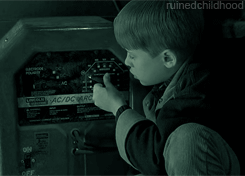
Home Alone is basically “Saw” for kids. Kevin McAllister clearly grows up to become Jigsaw.

Some of you may dispute an item here or there, but otherwise I’m pretty sure this is accurate. -Ray
Tweet